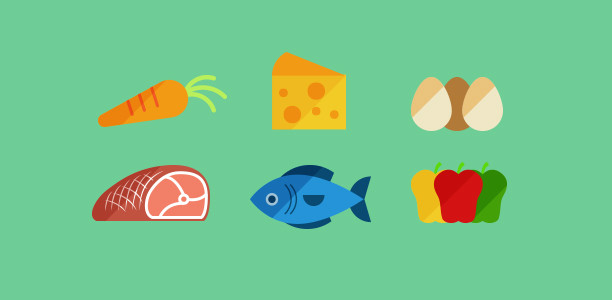Talk and learn about different foods, and guessing food items by asking yes and no questions
What's in my basket?
Talk and learn about different foods, and guessing food items by asking yes and no questions

Discuss different types of food and ask questions about them
This activity requires food cards. Contact us to find out more about how to get food cards for your school.
- HWB 0-15a - I am developing my understanding of the human body and can use this knowledge to maintain and improve my wellbeing and health.
- HWB 0-30a - Together we enjoy handling, tasting, talking and learning about different foods, discovering ways in which eating and drinking may help us to grow and keep healthy.
- HWB 1-15a - I am developing my understanding of the human body and can use this knowledge to maintain and improve my wellbeing and health.
- HWB 1-30a - By investigating the range of foods available I can discuss how they contribute to a healthy diet.
- recognise and name a variety of foods
- create and ask simple questions
Resources needed
- food cards
- a picture of a basket or shopping bag picture on the board for cards to be displayed on
If your school does not have a set of food cards, please request them from us at resources@fss.scot.
Setting up
Choose and display 10-20 of the food cards on the board onto an outline of basket or shopping bag. The amount and complexity of food should depend on the ability of the group.
Activities
- discuss previous learning related to food by asking pupils about their favourite foods
- introduce the game and rules, modelling questioning style and allow pupils to try making up questions before starting the game.
- examples of suitable questions can be given:
- is it a fruit?
- does it have a yellow skin?
- can it be eaten for breakfast?
- from cards displayed, the teacher selects a food and writes its name on a post-it without showing the class
- invite pupils to ask questions which can only be responded to with 'yes' or 'no' - they can then make a guess based on the information they have received
- when a pupil makes the correct guess, that card is removed from the board.
- the pupil who made the correct guess can then take over the role of the teacher, with support if required
- within plenary, discuss which questions were useful and which were less useful - what made them useful?
Assessment opportunities
SAY – Can pupils formulate and respond appropriately to questions?
SAY – Do pupils make appropriate choices based on information received?
Consider CfE Benchmarks, for example:
- Identifies, prepares and tastes a range of foods, for example fruit and vegetables.
Cross-curricular links
Literacy and English – Listening and Talking
Differentiation
Support
Pupils who find it difficult to formulate a question could choose one from a bank of sample questions.
Challenge
More complex foods can be chosen to challenge pupils. Possible choices of food cards need not be displayed to widen the possibilities for the other pupils guessing.
